McLaren 750S track review: Scalpel sharp
The new McLaren 750S might seem like an incremental upgrade over the 720S, but there is a lot more under the familiar skin.
Published on Apr 19, 2024 08:00:00 AM
16,163 Views
Follow us on
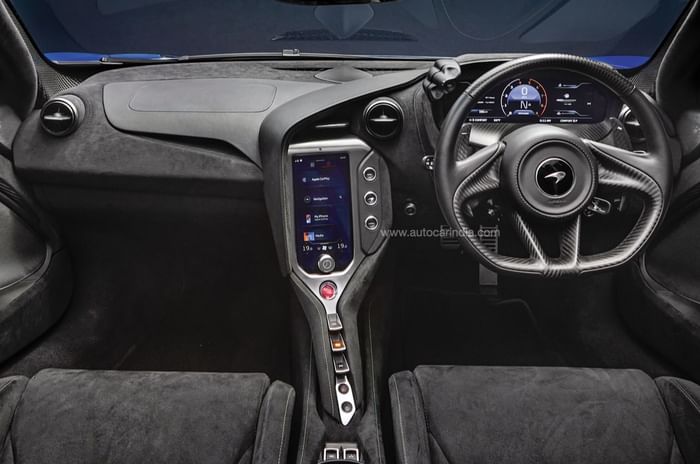
Interior is focused and minimalistic but gets all the basics, including a touchscreen.
We Like
- Explosive performance
- Wow factor
- Everyday useability
We Don't Like
- Expensive
The McLaren 750S is the definition of a quintessential supercar. With styling that would drop jaws, sound that would induce goosebumps and performance that would raise heart rates, it is a raw and unhinged experience. The last time we sampled it was in the beautiful town of Estoril in Portugal, but we finally have it on home soil and on India’s newest race track – CoASTT in Coimbatore.
| McLaren 750S Price, Mileage, Specifications, Features and Variants | |
|---|---|
| Brand | McLaren |
| Model Name | 750S |
| McLaren 750S Price | ₹ 6.81 - 7.50 crore |
| McLaren 750S Range/Mileage | NA |
| McLaren 750S Specifications | Coupe/Convertible | 2 doors | 2 seats View All Specs |
| McLaren 750S Features | LED headlight | 7-inch Touchscreen display | 4 airbags View All Features |
| McLaren 750S Variants | 4.0 Petrol Coupe | 4.0 Petrol Spider View All Variants |
It came in as part of the Autocar Track Day 2024 for a hot lap around the circuit with the fastest Indian, Narain Karthikeyan, behind the wheel. However, I managed to sneak it out for a quick couple of laps to get reacquainted with the monster.
McLaren 750S: Track drive experience and lap time
The McLaren 750S, especially in the ‘Lantana Purple’ seen here, seems fitting of something the Joker would choose to escape Batman. And boy would he have the firepower too. The 750S gets the same M840T 4.0-litre, twin-turbo V8 engine as the older 720S but with a host of updates. The first is the power that is upped to 750hp and 800Nm, but since the whole car is now 30kg lighter, the power-to-weight ratio is better still. On the long, swooping corners of CoASTT, it was rapid, and on the straights, a whole different level of fast.
So there’s serious business behind keeping it anchored; at turn 1, the now larger – by 20 percent – rear wing extends, acting as an air brake to help slow the car down and there’s massive 390mm discs up front cutting down speed. If you opt for the “track brake package”, you can also get monobloc calipers that McLaren says are far more effective.
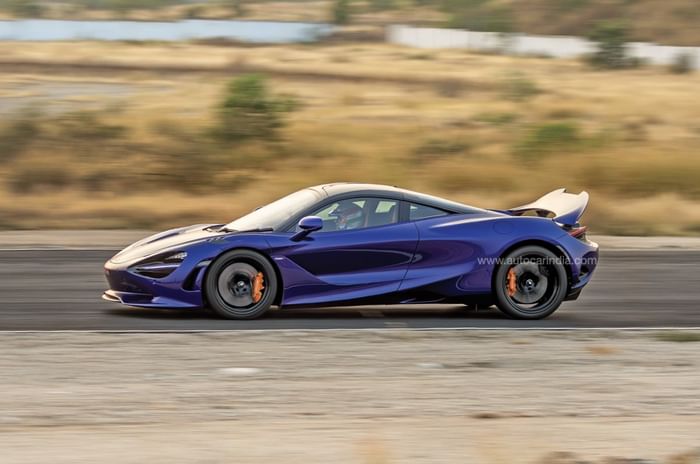
At Turn 2, you need to get a fast exit out of the corner and get the car straightened for the roughly 600-metre flat-out run through a long left-hander. And this is where the handling and suspension is impressive. The incremental changes that include a 3 percent softer front end and 4 percent stiffer rear suspension along with the updated chassis control system mean the 750S is taut and sure-footed despite its RWD character and the mountain of power. Trying to hold it down on turns 5, 6 and 7, and unleashing the engine yet again on the downhill section before jabbing the brakes for turn 8 is plenty fun.
As the car slows down, you can hear the pops and bangs from the exhaust, courtesy the new ‘limit downshift’ transmission function that is exclusive to Sport and Track mode. When the driver calls for a downshift that would over-rev the engine, the software acknowledges the request but changes gears only when engine speed and road speed can be synced. Speaking of which, through the two double left corners of 9 and 10 you can tell the 7-speed gearbox is quicker to shift and once you exit corner 10, there is a bit of a straight through the fast turn 11 where the 15 percent shorter final drive results in rapid acceleration through the gears.
Through the tight turns 12 and 13, where the 750S drops as low as second gear, the stiffness of the carbon tub chassis shines through. There is almost no flex and the suspension, especially in Track Mode, ensures the car is planted on the tarmac. Additionally, 2kg has been shaved off by using a new spring and damper design, and the front track is wider by 6mm for better grip. The 750S gets three tyre options; Pirelli P-Zero, P-Zero Corsa and the track-only P-Zero Trofeo-R, which were equipped on this car and helped with the massive grip levels.
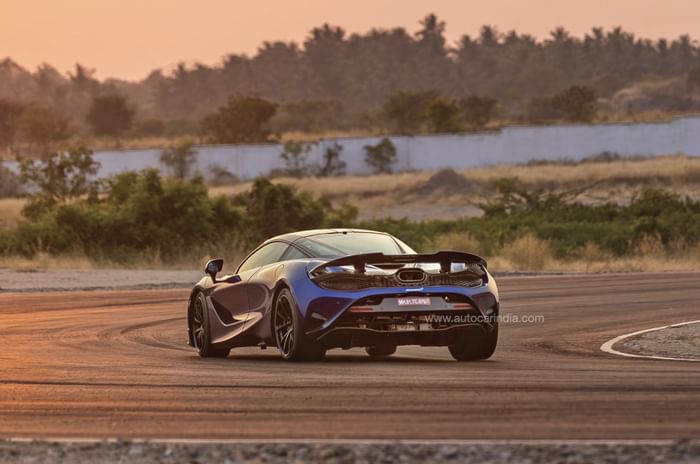
However, it is the back straight after turn 13 that is a reminder of the sheer speed the 750S can achieve. It crosses 200kph in a flash before navigating the final and technical turn 14 and then going past the 200kph mark on the start-finish straight again. What’s even more dramatic is the exhaust; 2.2kg lighter now, McLaren has ensured it sounds a bit fuller and bassier than the 720S.
There is a clear laboratory-like approach in typical McLaren fashion, but it’s all done to make a car that can result in a lot of thrills. There is also the option of variable drift control that will allow you to slide the car without spinning off, but I let Narain try that on his own since it requires a much higher risk appetite than I have. But for all its mastery on the track, when it comes to posing, the 750S is right up there with the best. It does take a serious eye to spot the differences from its predecessor though.
McLaren 750S: exterior and interior
Up front, the headlamp sockets are narrower, the bumper has been redesigned with sleeker air intakes and the front lip has been extended for better aerodynamics. The bonnet can also be had in exposed carbon fibre and the fenders, which are also made of carbon-fibre, feature ducts to relieve pressure from the wheel well. Over to the side, the swooping lines and 19-inch front wheels look stunning, while the 20 inches at the rear with fat 305/30 section tyres give it a muscular look.
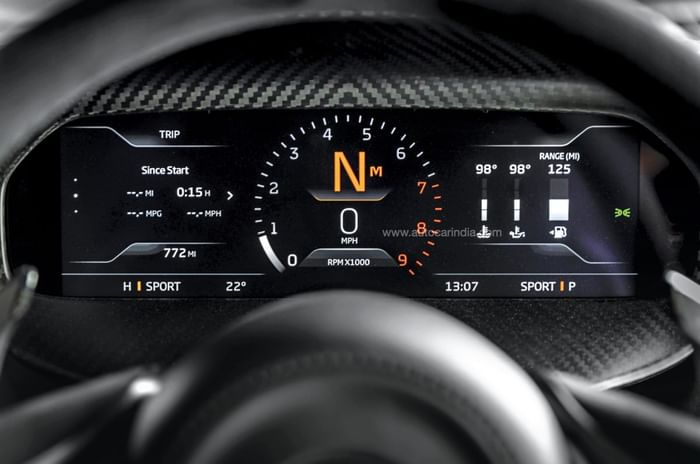
On the coupe, there is also the transparent engine bay cover that lets you peek at the last of the non-hybrid V8s and the rear is majorly a lot of vents to keep things cool.
Inside, the cabin is minimalistic and purposeful. Nothing to distract you from driving thanks to a button-less steering wheel and only the basic controls handy, again a typical McLaren trait. The vertical touchscreen is updated now with Apple CarPlay as standard and a new 360-degree camera, while the rocker switches for the drive modes have been moved to a better location closer to the steering wheel. One miss though, is the swivelling instrument cluster seen on the 720S, which is replaced by a fixed unit, which, while quite informative, lacks some of the wow factor the earlier version had. However, one hugely important feature is the nose-lift, which is quicker now and takes just 4 seconds to complete the lift, ensuring that you can get the better of our roads; well sort of, you’ll still have to crab crawl over speed breakers.
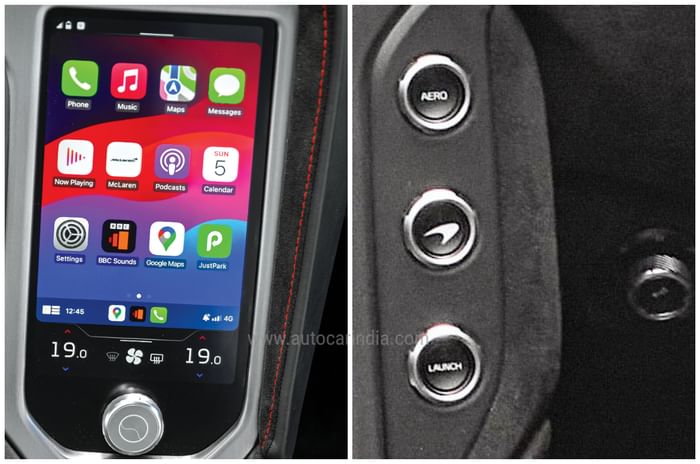
McLaren 750S: Price and verdict
At Rs 5.9 crore (ex-showroom, before options), it’s expensive, but the few that can afford it will appreciate every rupee spent. Few supercars out there can offer the undiluted joy of driving a rear-wheel drive supercar powered solely by a good old internal combustion motor. Models coming next will have some sort of electric motor assist, so this is also the last of a dying breed, something also worth paying for.
Also see:
McLaren 750S India video review
Tech Specs 
Copyright (c) Autocar India. All rights reserved.


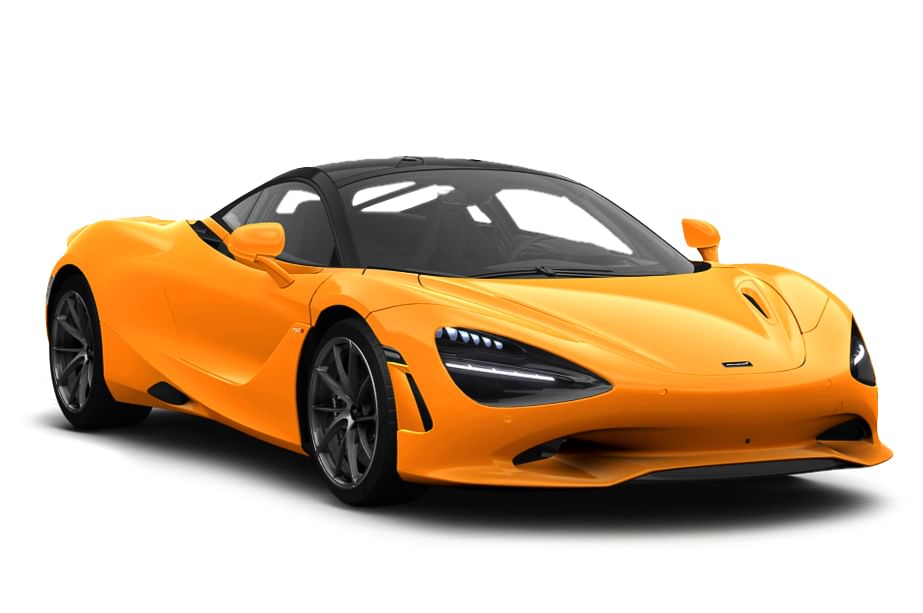


 Price
Price Engine
Engine Transmission
Transmission Acceleration
Acceleration Body
Body Brakes
Brakes Dimensions
Dimensions
Comments
Member Login
Personal Details
No comments yet. Be the first to comment.